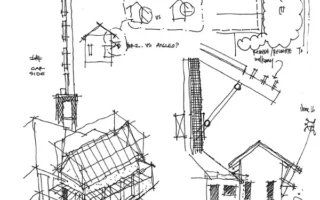Introduction:
Architecture, the art and science of designing and constructing buildings, has always been a symbol of human creativity and innovation. On the other hand, the Olympic Games represent the pinnacle of athletic achievement, showcasing the prowess of athletes from around the world. But can architecture, with its blend of artistic vision and technical expertise, be considered a sport worthy of the Olympic stage? In this exploration, we delve into the intriguing question: Is architecture an Olympic sport?
1.Understanding the Essence of Sport:
Before delving into the debate, it’s essential to grasp the fundamental principles underlying sports in the Olympic context. Traditionally, sports are characterized by physical exertion, competition, and adherence to established rules and regulations. Athletes train rigorously to hone their skills and push the boundaries of human performance, striving for excellence and glory on the global stage.
2.Architecture: Art, Science, and Beyond:
Architecture, while not traditionally associated with physical prowess, embodies its own form of athleticism. Architects undergo years of rigorous education and training to master the principles of design, engineering, and construction. They must possess a keen eye for detail, creative flair, and technical proficiency to translate abstract concepts into tangible structures that shape our built environment.
3.Historical Perspectives:
Interestingly, architecture has a historical connection to the Olympic Games. During the early 20th century, the Olympic Arts competitions featured categories such as architecture, literature, music, painting, and sculpture. Architects had the opportunity to showcase their designs for urban planning, stadiums, and public spaces alongside the sporting events. While these competitions were eventually discontinued, they highlight the recognition of architecture’s cultural significance within the Olympic movement.
4.Reimagining Architecture in the Olympic Arena:
In recent years, there has been growing interest in reimagining architecture’s role within the Olympic context. While architecture may not involve physical feats like running or jumping, it demands a different kind of athleticism. Architects must possess mental acuity, creativity, and problem-solving skills to navigate the complexities of design and construction. Moreover, the collaborative nature of architecture reflects the spirit of teamwork and camaraderie celebrated in the Olympics.
5.Challenges and Considerations:
However, integrating architecture into the Olympic program presents several challenges. Unlike traditional sports with objective metrics for performance, evaluating architectural excellence is inherently subjective. Furthermore, the logistical complexities of hosting architectural competitions within the framework of the Olympics raise practical concerns. Issues such as judging criteria, venue selection, and financial resources must be carefully considered.
6.A Platform for Innovation and Collaboration:
Despite these challenges, the concept of architecture as an Olympic sport offers exciting opportunities for innovation and collaboration. Imagine a global competition where architects from different countries come together to design sustainable cities, innovative structures, and inclusive public spaces. Such initiatives could showcase the transformative power of architecture in addressing pressing societal challenges, from climate change to urbanization.
7.Celebrating Architectural Excellence:
Whether or not architecture becomes an official Olympic sport, its inclusion in the Olympic Games would be a celebration of architectural excellence and cultural diversity. Architects play a vital role in shaping the world we live in, from iconic landmarks to community spaces that bring people together. By recognizing architecture within the Olympic movement, we acknowledge its contribution to our shared human experience and inspire future generations of architects.
Conclusion:
In conclusion, while the question of whether architecture is an Olympic sport may remain open to interpretation, its potential to enrich the Olympic Games is undeniable. By expanding the definition of athleticism to include creativity, innovation, and collaboration, we embrace the diverse talents and passions that define our humanity. Whether on the field of play or in the realm of design, let us continue to push the boundaries of what is possible and celebrate the enduring spirit of human achievement.




